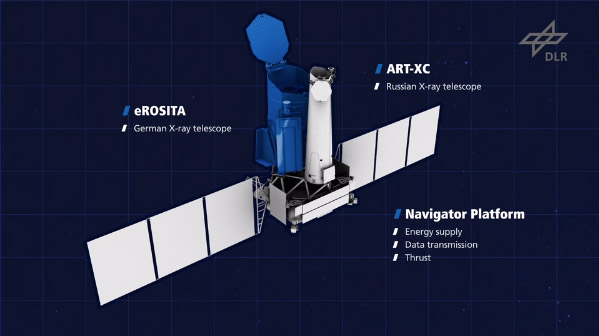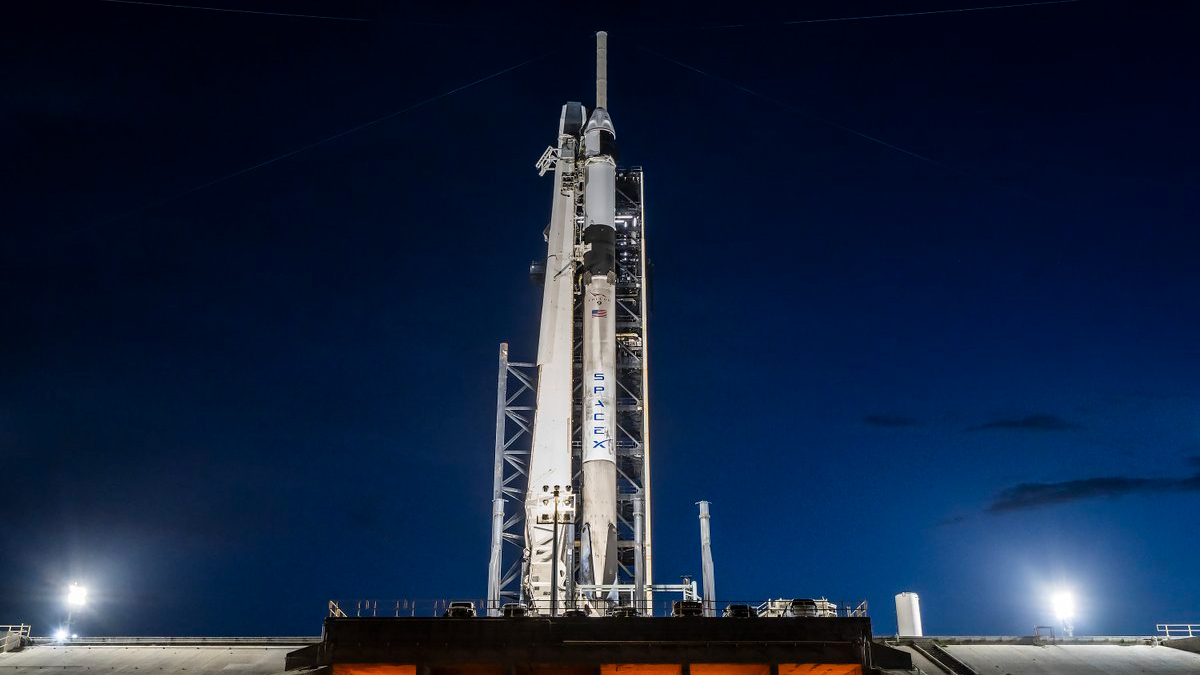Russia Launches Spektr-RG, a New X-Ray Observatory, into Space
A Russian and European all-sky-survey satellite is safely in space following a successful launch on a Proton rocket in Saturday (July 13).
The Spektrum-Röntgen-Gamma mission, also known as Spektr-RG, is a joint project between the Russian space agency, Roscosmos, and the German space agency, DLR. Spektr-RG launched to space from the Baikonur Cosmodrome in Kazakhstan at 8:31 a.m. EDT (1231 GMT, or 5:31 p.m. local time).
Saturday's launch followed weeks of delays. An attempt to launch the Spektr-RG mission on June 21 was delayed by a battery drain on the Proton rocket's Block DM upper stage, according to Spaceflight Now. Roscosmos then postponed a second launch attempt Friday (July 12) due to an potential issue with the booster.
Related: Behold! This Stunning Light Art Is Actually a Sky Filled with X-Rays


Spektr-RG will next navigate to a stable orbit in space called a Lagrange point (specifically, L2), where the gravitational forces of two large objects — in this case, the sun and the Earth — balance each other out. This location will allow Spektr-RG to perform its observations while using a minimal amount of fuel.
The spacecraft is expected to detect 100,000 galaxy clusters, 3 million supermassive black holes, tens of thousands of star-forming galaxies, the presence of plasma (superheated gas) and many more types of objects, according to Roscosmos.
The observatory includes two X-ray mirror telescopes, called ART-XC and eROSITA. ART-XC (a Russian payload) will examine the higher energies of X-rays, up to 30 keV, while eROSITA (Extended Roentgen Survey with an Imaging Telescope Array) is optimized for an energy range of 0.5 to 10 keV.
Breaking space news, the latest updates on rocket launches, skywatching events and more!
KeV is a measure referring to electrical potential difference. A single electron volt (eV) is a unit of energy equal to the amount of energy an electron (negatively charged particle) gains when it is accelerated from rest through a potential difference of 1 volt. A kiloelectron volt (keV) is equal to 1,000 electron volts.
ART-XC will have a narrower field of view and is designed to look at objects with a lower range of energies than eROSITA, according to Russian Space Web's Anatoly Zak. "The overlap in the sensitivity of eROSITA and ART-XC was reported to be useful for the calibration of the two instruments and increasing the reliability of their scientific results," he wrote.
Spektr-RG is expected to be calibrated in about three months; it will then perform its survey.
- Deepest-Ever X-Ray Image of Space Captures Countless Black Holes
- Hitomi: Japan's X-Ray Astronomy Satellite Explained (Infographic)
- XMM-Newton: Europe's Powerful X-Ray Telescope
Follow Elizabeth Howell on Twitter @howellspace. Follow us on Twitter @Spacedotcom and on Facebook.
Join our Space Forums to keep talking space on the latest missions, night sky and more! And if you have a news tip, correction or comment, let us know at: community@space.com.

Elizabeth Howell (she/her), Ph.D., was a staff writer in the spaceflight channel between 2022 and 2024 specializing in Canadian space news. She was contributing writer for Space.com for 10 years from 2012 to 2024. Elizabeth's reporting includes multiple exclusives with the White House, leading world coverage about a lost-and-found space tomato on the International Space Station, witnessing five human spaceflight launches on two continents, flying parabolic, working inside a spacesuit, and participating in a simulated Mars mission. Her latest book, "Why Am I Taller?" (ECW Press, 2022) is co-written with astronaut Dave Williams.
